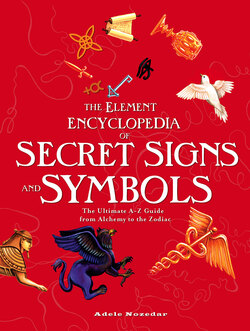Читать книгу The Element Encyclopedia of Secret Signs and Symbols - Adele Nozedar - Страница 161
CRESCENT MOON AND STAR
ОглавлениеThe crescent Moon is possibly the most distinctive Moon symbol; it shows the changing shape of the Moon and also the return to the same shape. Like the Moon, it is connected to the female principle and the element of water. It is also linked to virginity. Goddesses with a strong Moon connection—such as Diana, or Artemis—are often depicted with the unmistakable crescent Moon shape close by. In Christian iconography, Mary the Virgin, also known by the lyrical epithet Star of the Sea, appears standing on a crescent Moon with stars in the background, hinting at her Goddess nature. She generally wears the color blue, symbolic of spirituality and chastity. The crescent Moon that rests on its “back” looks like a chalice.
The crescent Moon with the star is one of the most iconographic symbols of Islam, although the symbol is believed to predate the faith by thousands of years as the symbol of another of the great Moon Goddesses, Tanit Astarte, the Queen of Heaven. There are several stories that explain why the symbol was adopted. One is that the founder of the Ottoman Empire, Osman, had a dream in which the crescent Moon stretched across the Earth. Because of this, he kept the existing Moon Goddess symbol and made it the emblem of his Empire.
Incidentally, the croissant—virtually a national symbol of France—is said to have been invented when the Turks were besieging Budapest in 1686 (another account gives the city as Vienna three years earlier). They dug underground passages with the idea of reaching the center of town without attracting attention. However, a baker, working through the night, heard the noise and raised the alarm. As a reward for saving the city, the baker was given the right to bake a special pastry in the form of the crescent Moon that was featured on the Ottoman flag.
